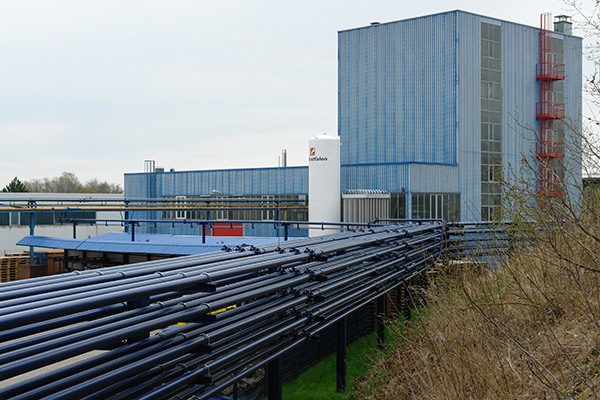Longest pneumatic conveying line worldwide
Recently Claudius Peters Projects GmbH installed a pneumatic conveying line for testing purposes 5.1 km long in the Technikum (technical centre) located at the headquarters in Buxtehude, near Hamburg, Germany.
The plant has been configured for variable conveying routes to enable different bulk solids to be tested including explosive coal dusts.
For material feeding into the conveyor line, two alternate working pressure vessels are used. The throughput during conveying is monitored by means of load cells to secure constant dosing of the material. To ensure minimum transport velocity at the material feed point into the conveying line, conveying gas velocity is determined prior to feeding and is kept constant throughout the complete start-up, operation and shut-down process. Independent of the feed quantity and the fluctuating back-pressure from the conveyance this ensures that the material transport can take place.
The complete conveying system including the de-dusting plant can be inert with nitrogen. Monitoring can be done on-line. The conveying line is equipped with several pressure transmitters which record the pressure trend throughout the complete conveyance.
The control of the pneumatic conveying system is realized semi-automatically with continuous data recording at the defined measuring points.
The basis for a safe design of any pneumatic conveying system is the precise knowledge of the material to be conveyed. Raw material analyses such as grain size distribution, bulk density, moisture and surface characteristics are absolutely mandatory and tests are generally carried out in the Claudius Peters raw material laboratory before engineering plant commences.
When focusing on high availability and safety-related requirements together with a low investment cost, the pneumatic long-distance conveying is a good alternative to regular mechanical conveying systems.
With this conveying test line Claudius Peters has proven that pneumatic conveyance even over several kilometres is technically possible. The results of the conveying tests confirm the calculation models applied and allow safe up-scaling. The plant has been designed and built as a permanent system. For further information and to discuss your conveying requirements and testing, please email projects@claudiuspeters.com
